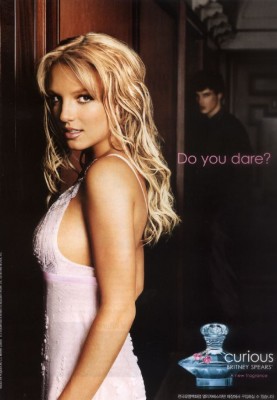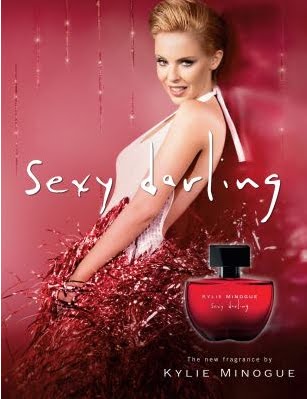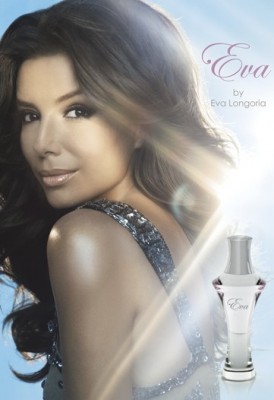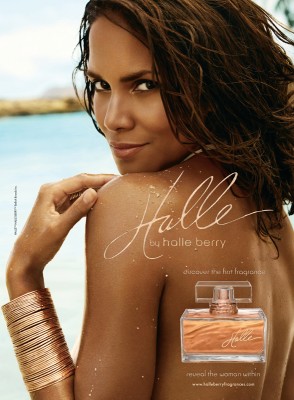Monday, 25 November 2013
Friday, 22 November 2013
District 9: Science Fiction & Representation
 'District 9' is a 2009 dystopian science fiction thriller film directed by Neill Blomkamp.A dystopia is the vision of a society that is the opposite of utopia. A dystopian society is often a planned structured society in which the conditions of life are deliberately made miserable, characterised by poverty, oppression, violence, disease, scarcity, and/or pollution for the benefit of a select minority or some unnatural societal goal.
'District 9' is a 2009 dystopian science fiction thriller film directed by Neill Blomkamp.A dystopia is the vision of a society that is the opposite of utopia. A dystopian society is often a planned structured society in which the conditions of life are deliberately made miserable, characterised by poverty, oppression, violence, disease, scarcity, and/or pollution for the benefit of a select minority or some unnatural societal goal.A typical dystopia paints a picture of government or society attempting to exert control over free thought, authority, energy, freedom of information. Others focus on systematic discrimination and limitations based on a variety of factors - genetics, fertility, intelligence, and age being a few examples.
An underlying theme in 'District 9' is state reliance on multinational corporations as a government funded enforcement arm. As MNU represents the type of corporation which partners with governments, the negative portrayal of MNU in the film can be seen as a statement about the dangers of governments, particularly in their outsourcing of militaries and bureaucracies to private contractors.
Themes of racism and xenophobia are also put forward by the movie in the form of speciesism applied to the aliens. The use of the word "prawn" to describe the aliens is a reference to the Parktown prawn, a king cricket species considered a pest in South Africa.
Labels:
District 9,
MS4,
Postmodernism
MS4 - Text, Industry & Audience: District 9 (Representation/Genre)

District 9 labelled xenophobic by Nigerians:
The squatters of Chiawelo share the District 9 limelight with another group on the bottom rung of society.
Nigerian immigrants play a large part in the film – taking the roles of gangsters, prostitutes or witch-doctors. They are depicted eating alien flesh or having sex with the creatures. Many Nigerians are furious.
An internet backlash is under way with an online petition and a Facebook group, "District 9 Hates Nigerians", accusing the film of xenophobia.
One blogger, Nicole Stamp, wrote: "That's Hollywood's Africa, isn't it. Black Africans shown as degenerate savages who'll have sex with non-humans and are pretty damn eager to eat people. Disgusting."
There was further criticism yesterday from the Nigerian-born British actor Hakeem Kae-Kazim, who appeared in the films Hotel Rwanda and Wolverine.
He told South Africa's Beeld newspaper that many Nigerians were upset about the film. "I have lived in South Africa," he said. "The country has so many beautiful things to offer … its problems can't be ascribed only to a small group of people."
On Facebook, he wrote: "If the African continent truly wants to be liberated, we cannot sit back and allow this depiction of a 'few rotten apples' to be spread across the world."
He expressed concern that District 9 would reinforce negative stereotypes of all Africans.
"The idea that it's not only Nigerians, but all Africans who behave in that way, will be spread across the world. I find that to be a painful thought. The manner in which the Nigerians are depicted cannot be justified."
Read related posts @ The Guardian
MS4 - Text, Industry & Audience: District 9 (Representation/Genre)
 'District 9' is a 2009 dystopian science fiction thriller film directed by Neill Blomkamp.A dystopia is the vision of a society that is the opposite of utopia. A dystopian society is often a planned structured society in which the conditions of life are deliberately made miserable, characterised by poverty, oppression, violence, disease, scarcity, and/or pollution for the benefit of a select minority or some unnatural societal goal.
'District 9' is a 2009 dystopian science fiction thriller film directed by Neill Blomkamp.A dystopia is the vision of a society that is the opposite of utopia. A dystopian society is often a planned structured society in which the conditions of life are deliberately made miserable, characterised by poverty, oppression, violence, disease, scarcity, and/or pollution for the benefit of a select minority or some unnatural societal goal.
An underlying theme in 'District 9' is state reliance on multinational corporations as a government funded enforcement arm. As MNU represents the type of corporation which partners with governments, the negative portrayal of MNU in the film can be seen as a statement about the dangers of governments, particularly in their outsourcing of militaries and bureaucracies to private contractors.
Themes of racism and xenophobia are also put forward by the movie in the form of speciesism applied to the aliens. The use of the word "prawn" to describe the aliens is a reference to the Parktown prawn, a king cricket species considered a pest in South Africa.
Monday, 18 November 2013
Thursday, 7 November 2013
The evolution of fairytale heroines in film
It's been a great year for warrior princesses at the movies – even better if they come bearing bow and arrows. First we had Katniss Everdeen, as incarnated in the svelte, fearless form of Jennifer Lawrence, eyes narrowing as she strung her bow and sent The Hunger Games $672m into the black.
Katniss was followed by Snow White, as played by sullen beauty Kristen Stewart, her sword slicing the air to save the kingdom of her late father and topple The Avengers from the top spot at the box office. And now we have Pixar's Brave, boasting the studio's first female heroine, flame–haired, cinch-waisted Princess Merida, "dear and bonny and lovable, the face beautiful, and transfigured with the light of that lustrous intellect and the fires of that unquenchable spirit".

So wrote Marc Twain of Joan of Arc but he could as easily have been describing the new breed of warrior princess riding, fighting, shooting, scything their way across our screens. As Sasha Stone commented at Awards Daily, "it's hard not to look at 2012 and not declare it the Year of the Girl". Although these feisty female role models have not met with universal approval. Merida could have used "a few more pixels in her waist", complained Peggy Orenstein, author of Cindarella Ate My Daughters: Dispatches From the Front Line of the New Girly-Girl Culture. "Merida doesn't really grow," pointed out Mary Pols in Time, "She's simply extended her time as a tomboy, another archetype, less a girl than a stereotype of a kind of girl."
Certainly, Disney princesses have been ploughing the feisty furrow for some time, at least since Princess Jasmine ran away from home rather than be married off at her father's behest in 1992's Aladdin. Jasmine, Pocohontas and Mulan were all touted, in their time, as "new", "empowered" Disney heroines who refused to sit at home plaiting their hair waiting for their prince to come. Clearly, some stereotypes are better than others, although even calling "stereotypes" in a Hollywood movie is a fraught activity, given that the semantic overlap between that and what most screenwriters would call "characterization". Either way, we have come a long way from the days when Snow White could arrive at the seven dwarves' home and immediately start house-cleaning without a word of complaint.
In a study conducted at the University of Connecticut, Dawn England and Lara Descartes divvied up the screen time of all eight Disney Princess into three categories: "domestic work", "interacting with animals", and "other". They reached the following conclusions:
"Princesses performing domestic work was only portrayed in the first three princess movies and again briefly in Pocohontas. However in the first two movies it occupied a significant amount of time. Time spent interacting with animals was very prevalent in the first four movies decreased slightly in the next three, and then significantly increased in Mulan."In Pocohontas' defence, it should be pointed out that teepees get messy very quickly without regular housecleaning, and that Mulan was accompanied throughout much of the film by a red-and-orange Chinese dragon voiced by Eddie Murphy, who is better better classified under "comic relief", perhaps, than "interacting with animals". But no matter – onto the princes, whom they scored for personality traits ranging from "assertive" to "troublesome" then comparing them with the princesses' scores:
"The princesses were significantly more likely to be cooperative, nurturing, tending to their physical appearance, and troublesome. While the princesses were not likely to be portrayed as physically strong, unemotional, or inspiring fear, these characteristics were more common among the princes. The princes were least likely to tend to their physical appearance."(Here Brave scores very highly, some of its strongest jokes coming at the expense of the young Scottish lords all vying for Merida's hand – a rogue's gallery of narcissists, boneheads and tennis-pro preeners.)
"The princes were action-oriented, often performing the climactic rescue that brought the conclusion of the movie. Over time the princesses' roles changed form being completely passive or asleep during the final rescue to assisting the princes.""Asleep" seems a little harsh on Sleeping Beauty – the poor girl had hardly nodded off – but perhaps the most surprising observation was this:
"Among the princesses, assertiveness was more common in earlier films and fearfulness and tentativeness were depicted more often in later films."
Huh. The modern princesses are more fearful and less assertive than their predecessors. And yet, at the same time, they lead the action more and need rescuing less. What's that about? After much mulling on the matter, it occurred to me that this might be a side effect of greater psychological verisimilitude coupled with the old Hemingway paradox about the brave man not being the man without fear but the man who feels fear and still acts. The princesses are showing more fear because they were doing more.

It certainly explains why these films have been such hits, even with boys. Female protagonists means greater asymmetry of battle (they are outmatched) means greater suspense (they could lose) means bigger thrills (they must keep their wits about them). Snow White and the Huntsman boasted enough swords, scimitars, axes, and snares to keep a horde of Hobbits busy for a month of Sundays, drawing the admiration of none other than James Franco who chivalrously defended Stewart's performance from its detractors, "she has worked her ass off. Whatever Snow White may be, Kristen is a warrior queen. Give her the crown." Or, as Twain said:
"Supremely great souls are never lodged in gross bodies. No brawn, no muscle, could endure the work that their bodies must do; they do their miracles by the spirit, which has fifty times the strength and staying power of brawn and muscle. The Napoleons are little, not big; and they work twenty hours in the twenty-four, and come up fresh, while the big soldiers with the little hearts faint around them with fatigue. We know what Joan of Arc was like without asking– merely by what she did. The artist should paint her spirit – then he could not fail to paint her body aright."guardian.co.uk: 29/6/12
'The Perfume Ad Formula' @ Visual Culture Blog
 |
| Click image to access |
Another theme explored in the perfume ad formula is the celebrity returning a gaze back to the spectator over her left shoulder. The pose is strongly suggestive of photographs taken on the red carpet in which the celebrities twist and turn to present their dresses to the assembled photographers. While Kylie Minogue is simply referred to as ‘Sexy Darling’, this emphasis on exhibitionism and a visual encounter with the celebrity is further stressed in Britney Spears’ ad for Curious. A man can be seen in the background to the photograph looking at Spears, while Spears herself is suggestively looking at the spectator. The slogan ‘Do you dare?’ further underlines a sexual element to the representation of gender, as if the spectator is invited to join the subjects into a hypothetical ménage à trois via the gaze.
Halle by Halle Berry and Eva by Eva Longoria also submit to the perfume ad formula of celebrity returning a gaze back to the spectator over the left shoulder. In both cases, the name of the perfume is the first name of the celebrity herself, whereas the name is written in such a way that it looks like the celebrities’ signature. This is an important element in the ad since, as it appears, the perfume is not only endorsed by the celebrity, but rather, it’s created by the celebrity herself. Like the artist signing his artwork, the celebrity signs her creation. I am using the word sign in the semiotic sense – the sign as a signifier. Here the signature signifies the celebrity’s assumed personal affiliation, even creation, of the perfume.
Subscribe to:
Posts (Atom)





